On My Love For Typewriters (and Computers and Keyboards)
“That’s the sound of typing. It’s the cadence of creativity, the percussion of punctuation. That sound, you’ll get lost in it. It becomes a rhythm, a music that will spur you on to other areas of imagination that you will eventually create and record forever on your typewriter..”
Typewriters are like little time machines. They look, sound, and feel like a piece of time.
Tom Hanks loves typewriters. Therefore you should too. Just kidding.
Tom Hanks said that in a video where he changed the ribbon on a typewriter (the ribbon has the ink). Tom Hanks loves typewriters. He created an app called Hanx Writer that's available on the app store and was part of a 2017 film called California Typewriter. Tom Hanks also gifted a sweet child in Australia a Corona typewriter because the child was bullied for being named Corona De Vries (dark times nowadays). Tom Hanks is the GOAT.
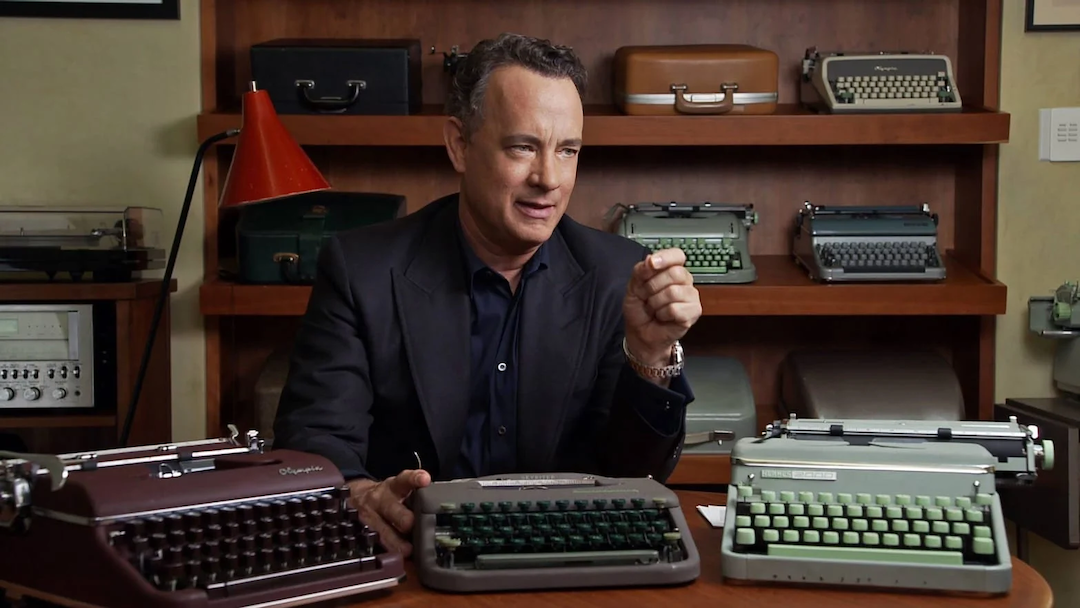
But before I knew that Tom Hanks loved typewriters, I loved them too!
There is a table of contents below. You can open up drop down menus, as always, for more information. Or you can just read the titles and still get tons of information. The choice is yours!
I did not grow up with typewriters. But I grew up right in front of my home's huge desktop computer and keyboard, tapping away day and night. My favorite part was the sound typing made. I was curious about how keyboards were made. And then I realized that typewriters were the cooler grandparent of keyboards.
Typewriters are at the intersection of technology, design, and mechanical beauty. Typewriters revolutionized writing and were an indispensable tool, before they became obsolete nearly overnight in the 1980s.
I love how carefully typewriters were constructed. Everything is soldered together carefully to the most minute degree. It took tens of prototypes to develop a working machine, and then hundreds more for it to become portable. If you peek inside, the skeleton of a typewriter looks like an organ. I love how deliberate using a typewriter is. From choosing your letters, to knowing when to reset your carriage, to changing the ribbon. On my MacBook, I type at 110 words per minute (yes thank you very much not so subtle flex). On a typewriter, probably 5 times slower. I love the bell that goes off, the ripping sound that occurs when you pull out a completed page, and above all, the sharp percussion of the keys that are more distinct than any keyboard today. Often, each key sounds different. Sometimes it's staccato, sometimes it's more legato. When you make a mistake, it's permanent. But the mistakes are beautiful too. Everything is about the permanent and instantaneous results and joy. You can hold what you created right away and watch it happen. Perhaps that's also why I like instant photography... Either way there is something supremely satisfying about this tactile experience. And each machine is so different! You have to get to know it, understand its history, and practice with it.
Right now, I do not have my own typewriter. I have my eye on one model, but I can't really afford it right now nor have I found one that at the level of functionality that I want. The hunt for a typewriter is also part of the game. I'm willing to wait!
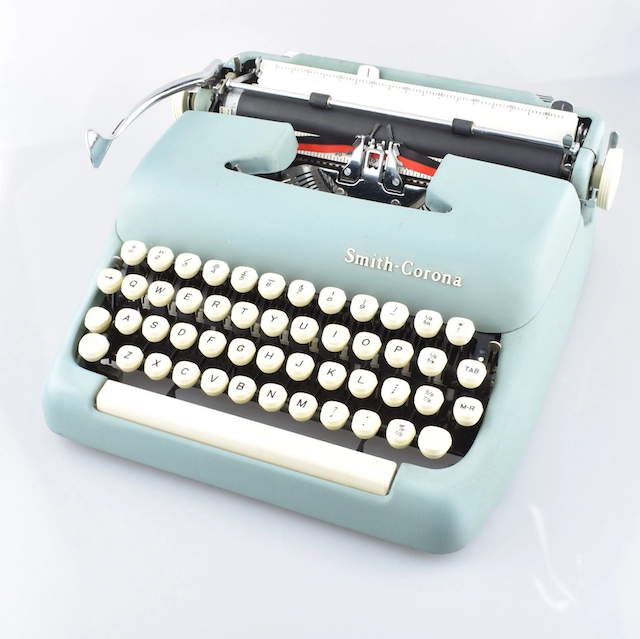
The history of typewriters is heavily intertwined with America's and Europe's history of technology. It is the partner to the computer and to the mind. Read on to learn more <3
‣1575: Italian Francesco Rampazetto invents the first invention to impress letters on paper
Called the scrittura tattile, it is considered the first typing instrument.
‣1714: English inventor Henry Mill designs and actually patents the first typewriter.
‣1802: Italian Agostino Fantoni designs a typewriter for his blind sister. 1808: Italian Pellegrino Turri invents carbon paper for his personally designed typewrtier.
‣1829: The first American patented typewriter by Willian Austin Burt, called the "Typographer"
It is a rectangular wooden box that uses rotating levers to impress letters on paper. It was never commercially produced because no one wanted to buy the patent.
Throughout the 19th century, Europeans and Americans produce their own models of writing machines, as there is an increasing need for mechanization of the writing process, but none are commercial or successful.
‣1865: Rasmus Malling-Hansen designs the first commercial typewriter
It is named Hansen Writing Ball. It was a success in Europe and was sold as late as 1909. However, it was impractically designed and ultimately did not take off.
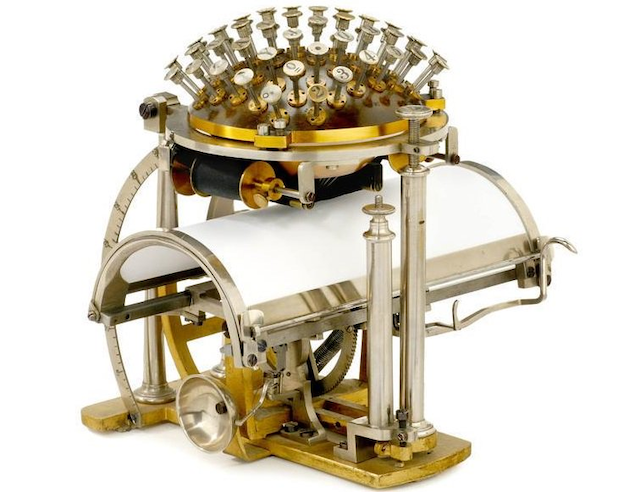
‣1873: Americans Christopher Latham Sholes, Frank Haven Hall, Carlos Glidden, and Samuel W. Soule develop the first commercially successful typing device. They also developed the QWERTY design!
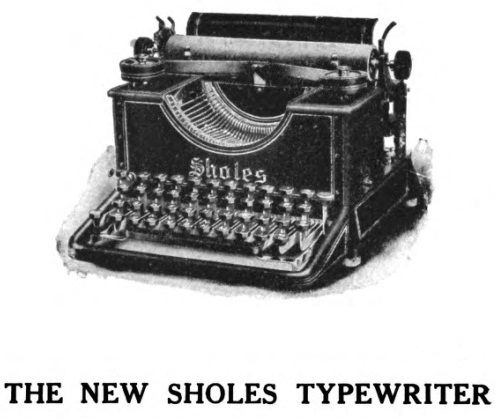
‣Why was QWERTY designed?
QWERTY keyboard layouts were designed to slow down typists. Why? To reduce errors. When you made mistakes with typewriters, you had to manually roll back paper to find the error. QWERTY successfully slowed them down and promoted more deliberate and accurate typing.
‣Dvorak layout
Patented in 1936 and was QWERTY's competitor. It clearly lost out.
Thinking it was a horrible invention, Christopher sold the production rights to Remington (for $12,000 then or ~$310,000 today), who was a gun manufacturer but then ended up becoming one of the greatest typewriter manufacturers of all time.
Remington led the commercial success of typewriters in the United States.
‣1878: Remington No. 2, the first typewriter with upper and lowercase letters, is launched. Aka the invention of the shift key.
In the 1870s and 1880s, Americans were reluctant to accept the idea of "mechanical writing" as all letters were handwritten. The first Remington model cost $125 USD (~$3,200 today) and it seemed impractical and rude. With the introduction of Remington No. 2 in 1878, offering upper and lowercase due to the invention of the shift key, modern typewriters took off.
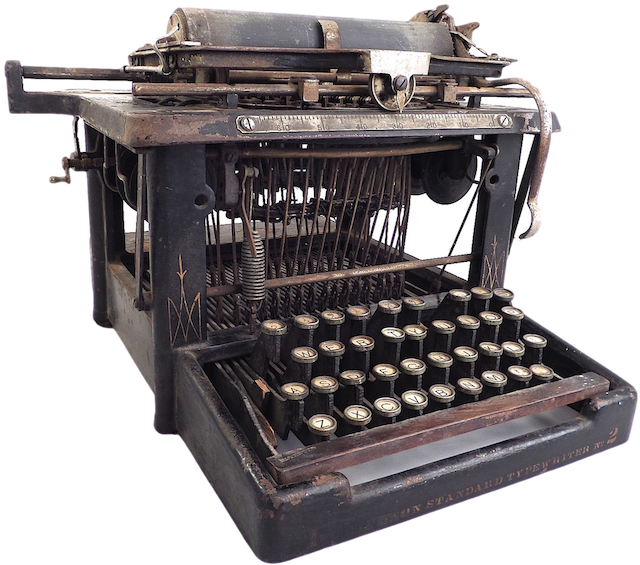
‣Remington's career downfall
In the late 19th century, a tab key was also invented to pre-designate locations on a page. This greatly helped with writing columns of numbers.
Finally, in the mid-1880s, typewriters became commonplace in offices. Three classes of typewriters were extensively used:
Hammonds - you typed on a wheel and it had a double shift
Double keyboards - one for upper case, and one for lower case. No shift key but hard to learn
Shift key keyboards - the most popular, with keys containing an uppercase and lowercase letter
In the 1900s, mechanical typewriters were becoming standardized, and electric typewriters were invented. IBM dominated this space.
‣1910: Charles L Krum and Howard Krum make the first commercially successful electric typewriter - the Morkrum Printing Telegraph
It uses a wheel to imprint letters.
‣1914: James Fields Smathers invents the power-operated typewriter and delivers a successful model to Northeast Electric Company in 1923, a company that made electric motors.
They supply the motors for the 1925 Remington Electric typewriter, selling >2000 units!
‣1929: General Motors produces the first Electromatic Typewriter.
They took over Northeast in 1928.
‣1933: IBM acquires Electromatic and invests to redesign the basic typewriter
They invested 1 million USD then, which is over 19.6 million today!
‣1935: IBM launches the Model 01 IBM Electric Typewriter.
It was the first electric typewriter in the US to become successful. By 1958, IBM derived 8% of its revenue from electric typewriter sales.
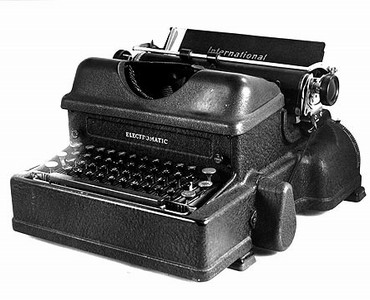
‣1941: IBM launches the Electromatic Model 04 electric typewriter, featuring proportional spacing
Proportional spacing means assigning varied spaces between different sized characters instead of the same spacing.
‣1961: IBM introduces the legendary IBM Selectric!
It uses a typeball the size of a golf ball to imprint letters. The typeball was replaceable and it was fast and jam-free. It was a commercial success for >2 decades. They became de facto in office environments and sold heavily to schools. In 1973 IBM also introduces interchangeable two-color cartridges.
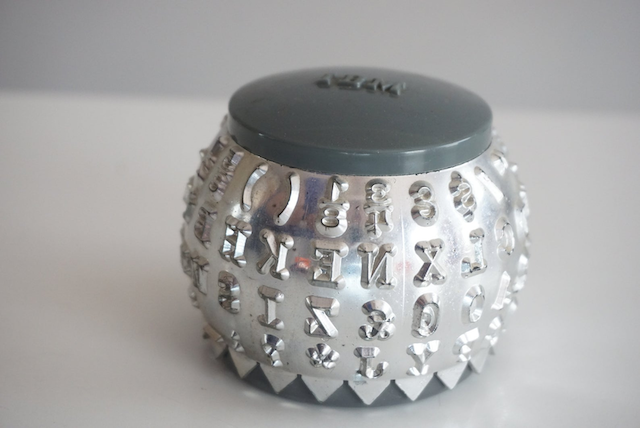
‣1970s: Invention of the daisy wheel mechanism with Olivetti's electronic typewriters leading the new movement
The daisy wheel mechanism was developed by Diablo Systems and essentially allows typewriters to operate 2-3x faster. Olivetti held the world record for electronic typewriters for years to come before in 1981, Xerox bought Diablo Systems.
‣1981: Xerox launches a typewriter with dedicated processors, RAM, external memory storage, and a single line LCD screen with a spelling/grammar checker (wow!).
Later, companies such as Smith-Corona and Philips introduce their own electronic typewriters and in 1991, IBM sells its typing division to Lexmark.
Typewriters slowly become obsolete in the 1980s and are replaced by the rise of word processors (which are just typewriter keyboards+the brain of a computer), which then became software tools, and then just computers. However, even in 2009, typewriters many government agencies still used typewriters.
Mark Twain
is supposed to be the first author to submit a typewritten novel to a publisher. He submitted Life on the Mississippi (1883) and The Adventures of Tom Sawyer (1876) both in typewritten manuscript, on Remingtons. It's said that he tried the OG Sholes & Glidden Treadle from 1874.
Ernest Hemingway
used Royal portables (Quiet de Luxe), Corona's, and Underwoods for The Old Man and the Sea (1952), The Sun Also Rises (1926), and A Farewell to Arms (1929). It's said that he liked to write standing up. Clearly he cared a lot about his posture. We should all take notes.
Jack Kerouac
typed On the Road on 1 roll of paper for 0 interruptions for 3 weeks! It ended up being 1 single spaced paragraph, 120 feet long lol. He also types at 100 wpm so he is pretty much a beast.
Agatha Christie
primarily used Remingtons and Coronas. She dictated her stories to a typist because she broke her wrist. When her typewriter was put up for auction in 2009, it fetched $254,500.
Orson Welles
used an Underwood portable for Citizen Kane (1941) and War of the Worlds (1938).
L. Frank Baum
used Smith Premiers and Smith-Coronas for The Wonderful Wizard of Oz
Jack London
used Columbias and Remingtons for The Call of the Wild. Apparently typewriters were key for him because he had horrid handwriting.
Dr. Seuss
used Smith-Corona portables for Green Eggs and Ham.
Cormac McCarthy
used Lettera 32 Olivetti from 1963 to write The Road, No Country for Old Men, and 8 other novels.
Maya Angelou
used an electric Adler even though she obviously had access to laptops. Apparently her Adler cost $5,000.
Helen Keller
used a Hammond and LC Smith. In her autobiography, she wrote that she doubted she could have gone to college without it.
George Orwell
used a Remington portable, the same model as Agatha Christie. We all know what he wrote.
William Faulkner
used an Underwood portable and wrote The Sound and the Fury (1929) and more.
E. Remington and Sons
They produced the Sholes and Gliddon and then gave birth to the modern portable.
Featuring: Remington Letter-Riter (1956)
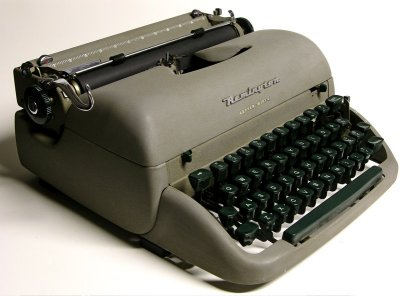
IBM
Featuring: IBM Selectric II, obviously (1961)
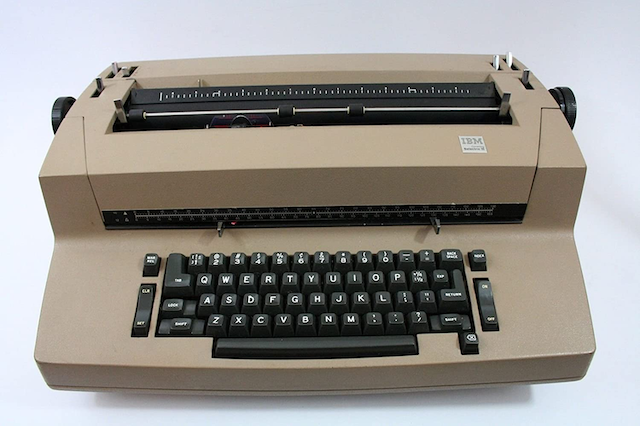
Hermes
Featuring: Hermes 3000 (1961, 1963, redesigned in 1967). JUST LOOK AT THIS. This is what I want. omg.
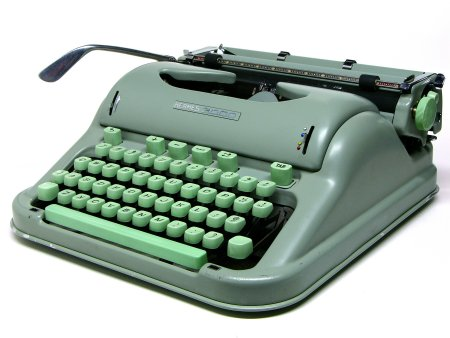
Imperial Typewriter Company
Featuring: Imperial Model B (~1912). I mean like ??? like ??????? so cool...
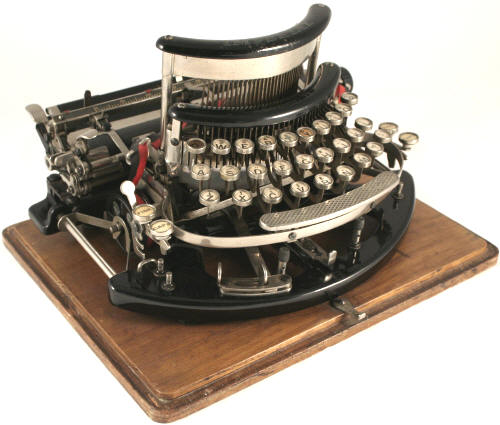
Olivetti
Featuring: Olivetti Valentine S (1969). Sold as a fashion accessory!
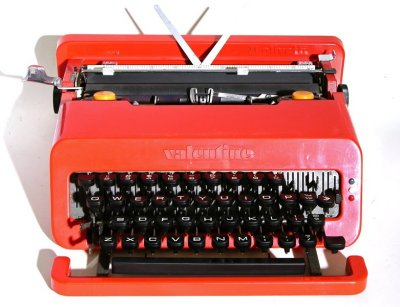
Royal Typewriter Company
Featuring: Royal Quiet DeLuxe (1948 and beyond), used by several famous authors.
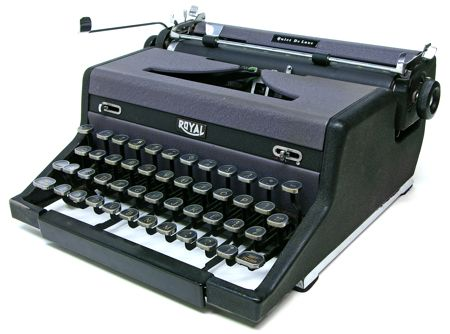
Smith Corona
Featuring: Smith-Corona Silent-Super (1960). I mean, just look at it. Smith-Coronas are still quite common today!
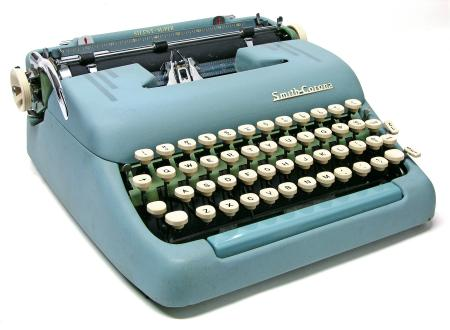
Underwood Typewriter Company
Featuring: Underwood #5 (1926). What most people think of when they think of typewriters. Sold over 4 million!
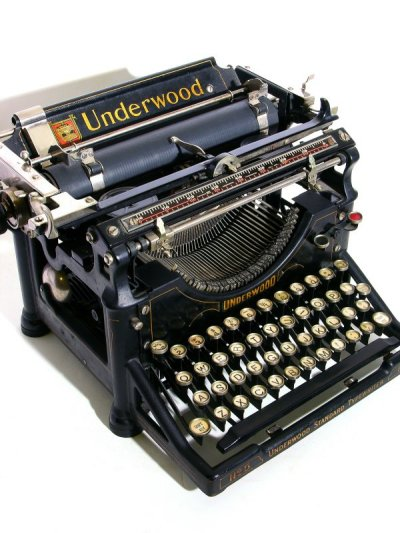
Olympia
Featuring: Olympia SM3 (1955). Popular amongst writers.
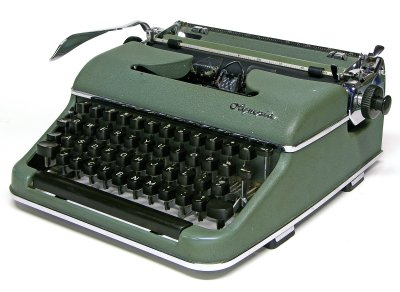
Hammond
Featuring: Hammond No. 12 (1905). HOW COOL
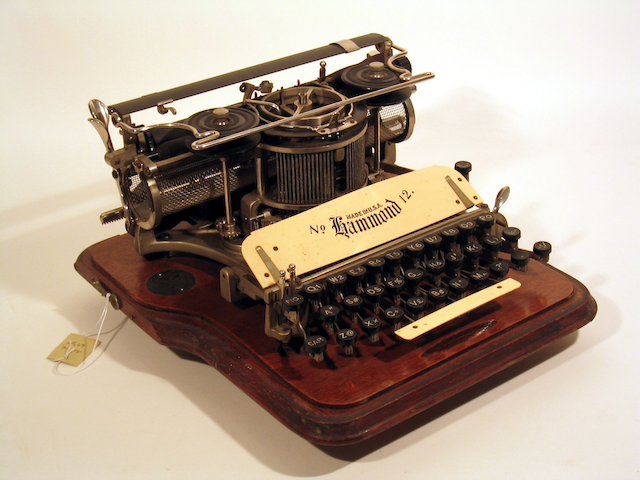
Today, there are few brick and mortar stores selling typewriters as they are a lost art.
‣In fact, there is only one family run store (Gramercy Typewriter Company) in all of NYC selling them.
They have one building in Flatiron for repairing and restoring typewriters and the current location on Google maps is where they display and sell. When you go and visit, they let you try out their typewriters and they will explain to you the history behind them as well as explain why certain typewriters are structured differently! They sell electric and mechanical ones, and if there is one you are looking for that they don't have in display they check their inventory. Paul and Jay Schweitzer are very kind! Funnily, they only take cash so if you visit and want to purchase, make sure you bring it.
There are also other locally run brick and mortar locations around the US but there are probably <20 total! Typewriters are normally sold second hand since they're not produced anymore.
‣Where to Look:
Reddit forums, Etsy, Portable Typewriter Forum, Yahoo groups (ikr), etc. Typewriters 101 has tons of great information and can also help restore. Try to buy from local buyers for pickup, because if they ship you one, it might get damaged along the way, which would be so sad. Make sure the seller knows how to package and ship them. But honestly this is a pretty big market.
Ask for a sample of all keys tested on a piece of paper! This shows that all the keys are functional and print well.
Also ask to see if it comes in the original box/suitcase with a manual.
Garage/yard sales, antique stores, flea markets, anything vintage-looking. They're usually not functional or need some cleaning up.
Go to an actual store to test them out! Nothing can replace the feel of a typewriter and understand its history, who owned it previously, and where it was. Actual stores are also more transparent in terms of their pricing, although it is usually higher than if you finesse bargains on websites. Plus, you will know exactly what you are getting from an actual store and it will be reputable because the stores are usually family run.
‣Pricing:
It honestly ranges so much. If you're purchasing a model pre-1970, then you're paying for vintage and historic value. The farther back you go, the higher the price. Typewriters from the Great Depression are worth a lot! (Imagine all the emo manuscripts from then...) Also, typewriters with glass keys and chrome parts are worth more than plastic keys. Typewriters with fancy paints are worth more, and international typewriters are worth more (literally because of shipping).
Generally there are 2 types of typewriters: Desktop and Portable. Portable is obviously smaller.
Condition is EVERYTHING. You can get them evaluated at a store or just Youtube/Google, a lot. It highly impacts the price!
Examples
If you buy a Smith Corona Sterling, those are quite common so it can range from $50 to several hundred, depending on the make, model, and if it's refurbished or not.
If you're looking at Underwoods, for example, those will usually cost more regardless as there are fewer of them.
Hermes 3000, my dream typewriter.... usually costs several hundred. They're harder to find and are obviously beautiful models, so they're quite high in demand amongst those who want them.
Remington 3B - only around 5000 were made in the 1930s.
When looking at price, make sure to see if it's functional or needs restoration/refurbishing! I think it is better to buy a guaranteed functional one, unless you have a store nearby that you can take it to for restoration. Sometimes restoration will cost more than the actual model! So do your research.
‣1822: English mathematician Charles Babbage invents a steam driven calculating machine
It is able to compute tables of numbers. It is a failure, unfortunately.
By 1880, the US population was so large that it took over 7 years to tabulate US Census results. Punch card computers were then created to accelerate the process.
‣1890: Herman Hollerith designs a punch card system to calculate the 1880 census
It is accomplished in just 3 years and saves the government $5 million! He establishes IBM.
‣1936: Alan Turing proposes the universal machine (later called the Turing Machine)
It is supposed to be capable of computing anything computable. The modern computer is based off of this.
‣1939: Hewlett-Packard is founded by David Packard and Bill Hewlett
In a garage in Palo Alto!
First generation: ABC, ENIAC. Processors can only perform 1 single task, and had no operating systems.
‣1941: Atanasoff, a prof at Iowa State, and his grad student Clifford Berry design a computer that can solve 29 equations at once.
This is the first time a computer can store information on its main memory. Called the Atanasoff-Berry Computer (ABC).
‣1946: ENIAC, the first computer, was constructed.
The ENIAC (Electronic Numerical Integrator and Computer) was build for the military to calculate paths of artillery shells. It used teletype to input data. Basically, cards were inserted into the Teletype and a series of holes (keypunches) were punched into the cards according to the keys pressed on the teletype machine. After being keypunched by the computer, the cards were analyzed via a card-reader. aka ancient tangible memory/data!
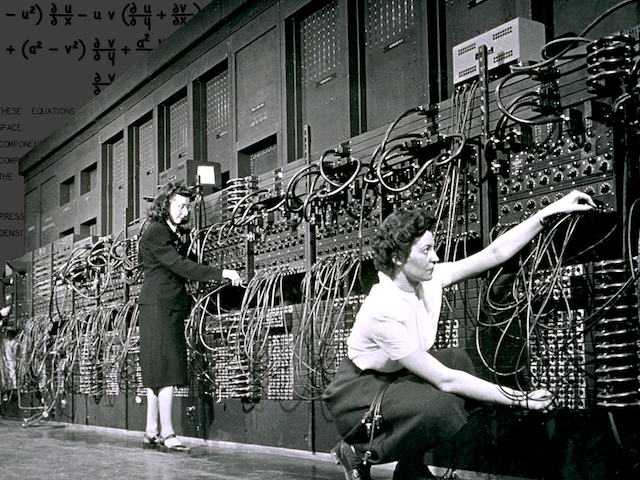
2 Penn professors, John Mauchly and Presper Eckert built the ENIAC at Penn's Moore School of Electrical Engineering! It fills a 20 ft x 40 ft room and has 18,000 vacuum tubes...
Second generation: Over 100 programming languages were developed, computers got memory and operating systems. There were also ways to store media such as disk and tape! Printers could be used too.
‣1948: BINAC
BINAC computers had a different input/output method. They used electromagnetic controlled teletypes to input data and print results. It was used for business and government applications.
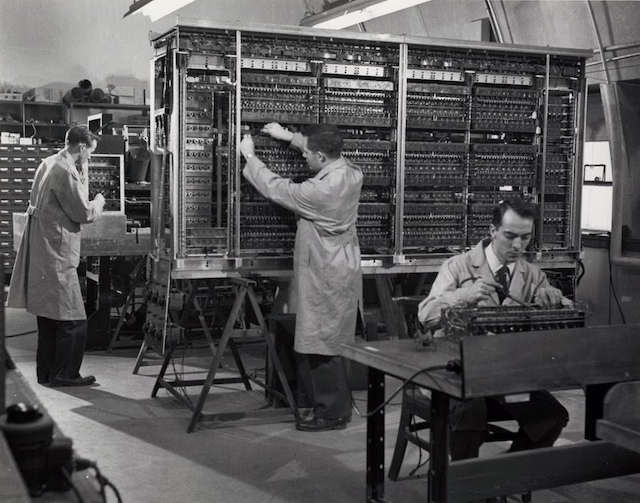
Mauchly and Presper left Penn to get Census Bureau funding to build this.
‣1951: UNIVAC 1
First computer for commercial use introduced to the public.
‣1953: Grace Hopper develops the first computer language (COBOL)
It is used for most government and finance businesses today. It's the reason why the unemployment applications can't go through... You can't just adapt it to a new language you have to completely rewrite it! And we all know the status quo is way too hard to change, no matter how damn necessary it is.
‣1953: IBM 650 and 700
Third generation: Integrated circuits were invented so computers became more powerful and stronger. They could do many things at once. Rise of Apple, Microsoft, and PC's. Rise of operating systems.
‣1964: Bell Labs + MIT create the MULTICS computer
It's a time-sharing, multi-user system with a video display terminal (VDT). Basically, text is instantly visible as it is typed. Communication and control of computers is suddenly so much easier! It is super user friendly and straightforward, with no hole punched index cards anymore.
‣1969: Developers at Bell Labs produce UNIX
Written in C, UNIX was portable across many platforms and became the choice amongst large companies and governments. But it was slow and never used by PC users.
‣1971: Alan Shugart + IBM invent the floppy disk
Data can now shared amongst computers!
‣mid 1970s: Imsai and Altair create the first small PCs for everyday consumers
Scelbi & Mark-8 Altair, IBM 5100, Radio Shack TRS-80 (trash lol) ,Commodore PET. They're called S100 computer systems and were built by hand. There is no way to save data and the keyboard is just a set of key switches. If you wanted a standard keyboard, IBM had an electric typewriter for you lol. A second keyboard was needed for data entry. Also, no hard drives or floppy disks either (omg tbt).
‣1976: Steve Jobs and Steve Wozniak start Apple Computers on April Fool's Day!
They rolled out the Apple I, the first computer with a single circuit board.
‣1977: Jobs and Wozniak incorporate Apple
Birth of color graphics!
‣1981: Acorn, the first IBM PC, is introduced
It uses Microsoft's operating system, Intel's chip, 2 floppy disks, and a color monitor. It popularized the term "PC" and was widely distributed.
‣1983: Apple's Lisa flops and becomes Macintosh
Macintosh is the first computer with a mouse and comes with GUI. This makes it much easier for anyone to use.
‣1985: Microsoft announces Windows. The first do com domain name is registered on March 15
‣1990: Tim Berners-Lee develops HTML
This gives rise to World Wide Web
‣1994: PCs become gaming machines
Command & Conquer, Alone in the Dark 2, Theme Park, Magic Carpet
‣1996: Sergey Brin and Larry Page develop Google at Stanford
‣1999: "Wi-Fi" becomes part of computing language
Users can connect to Internet without wires!
‣2001: Apple rolls out Mac OS X operating system
Microsoft also rolls out Windows XP with redesigned GUI
‣2005: YouTube is founded. Google acquires Android.
‣2006: Apple introduces Macbook Pro and iMac
Nintendo Wii hits the market too
‣2007: Hello, iPhone
‣2010: Hello, iPad
‣2011: Hello, Chromebook
‣2012: FB gains 1 billion users wowza
‣2016: The first reprogrammable quantum computer is created
There were no quantum computing platforms that could program new algorithms into their system. They were previously just for working with 1 algorithm.
Can you believe that all this happened in like 50 or so years? Computers are the fastest growing technology in our history, by far!
The first keyboards were sold in the 1970s and all built from scratch. They were super heavy and normally targeted at computer programmers/engineers. Hence, they were ugly and not aesthetic. They came out when PC's started becoming commercial.
‣1981: IBM releases their first PC and in 1986, it comes with the Model M keyboard
This keyboard was super successful because it was super easy to use! No need to convert typewriters or build your own. It was a mechanical keyboard and was constructed of the highest quality. The accuracy... the comfort... the sound... Think of the best keyboard ASMR and this one is it.
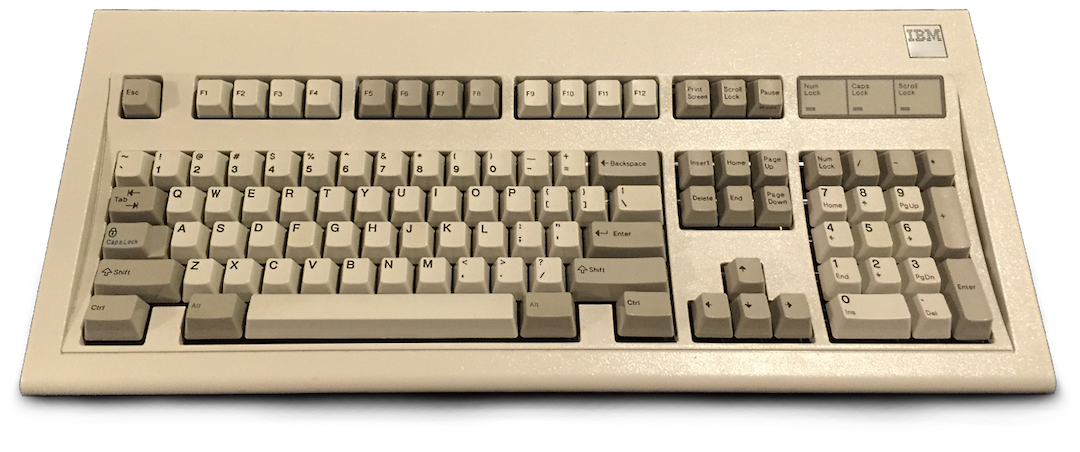
The Model M is so well loved that they make keycaps to allow modern mechanical keyboards to have the IBM Model M look today.
The Model M is so well loved that they make keycaps to allow modern mechanical keyboards to have the IBM Model M look today.
‣1990s: membrane switches replace mechanical key switches
They are quieter, weigh less, and are cheaper to produce. However, they come at the cost of quality as manufacturers started focusing on aesthetics. Compare the 1983 Apple keyboard versus what you have on your Macbook today... night and day!
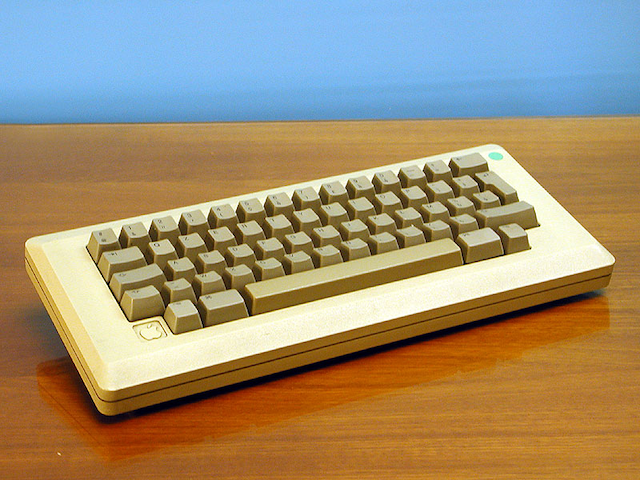
Today, we see keyboards with flying saucers, jellyfish, crazy RGB lights, and lasers. It's amazing to think that they started from typewriters, became teletype machines, and now we barely touch our computer and can type accurately and without errors.
Mechanical - think of gamers and bankers
what it is: uses physical switches under keys to record each keystroke. it bounces back quickly
durability: more long lasting because they use metal on metal contact points, thus being more resistant to repetitive strokes
feel: very audible! clickity clack clack asmr
maintenance: you can separate, clean, and reattach keys
best for: gamers or people who use keyboards a lot or people who want a long lasting keyboard, often heavier and larger
key rollover: better for faster typing speed, less fatigue, and pressing several keys at once
price: can be much more expensive, depending on the build you buy, or if you customize your own
more features: customize your keycaps!* see below
Ordinary/Membrane - think of Macbooks
what it is: uses a rubber dome and membrane to depress and record the key
durability: domes and sticky keys deteriorate easily, it's over for you if you spill something
feel: super quiet! tap tap tap mush wobble squish
maintenance: susceptible to dirt, keys are usually not removable
best for: everyone, really, especially if you don't use your keyboard a lot, also much more portable and light and probably much sleeker
key rollover: sometimes the keys won't register if you type too fast, sometimes you have to press hard to register
price: easy and cheap to produce, cost savings pass down to you too
And now, here are some pictures of keyboards and keycaps that I like.
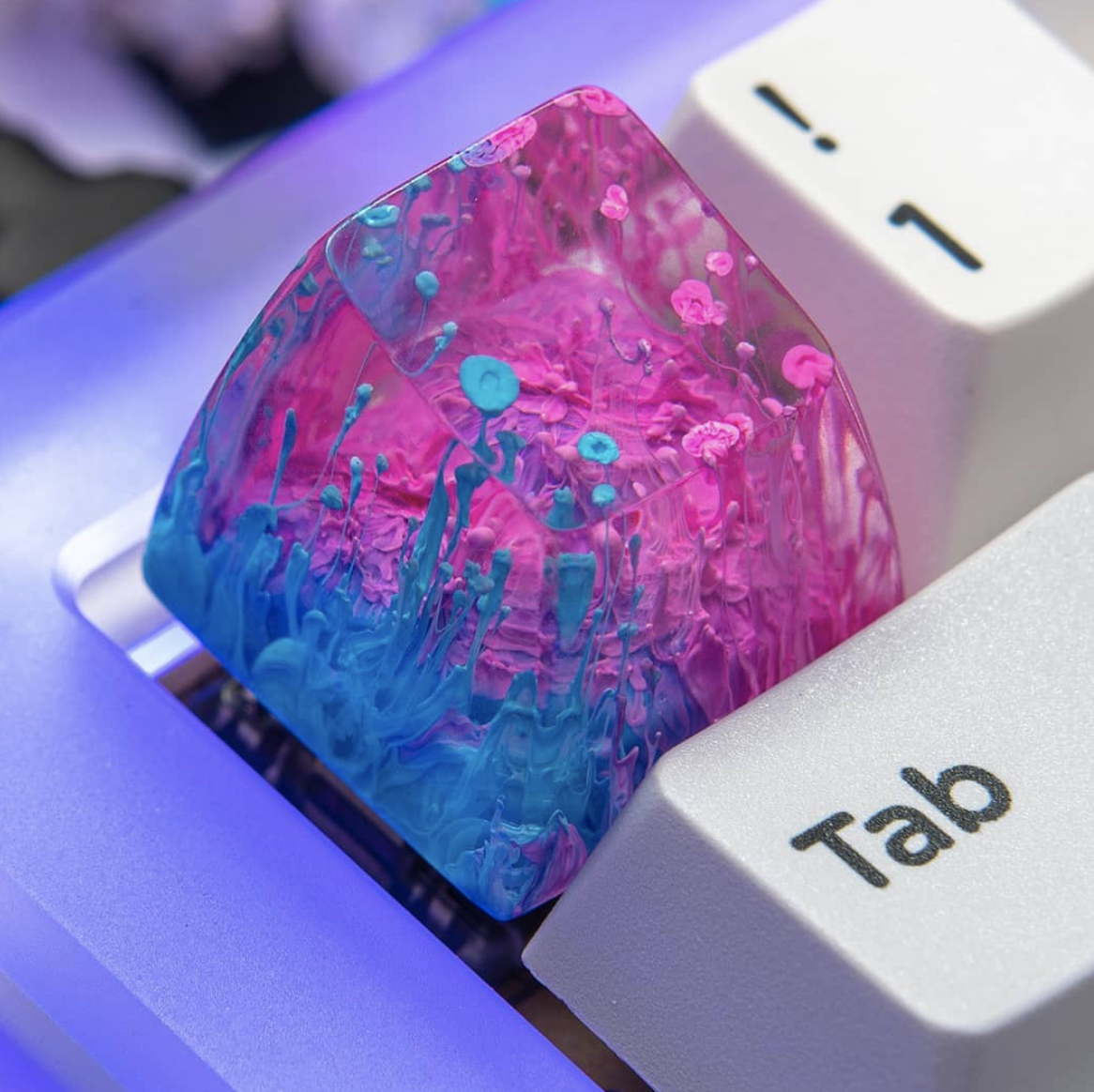
Artisanal keycap by gothcaps: Pillars of Miami. I bought this!
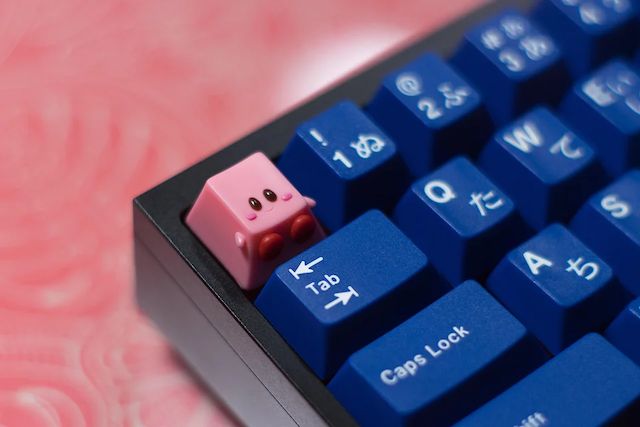
Kirby artisanal keycap from Keyby. I don't even game but this is so cute also the cobalt keycaps are amazing...
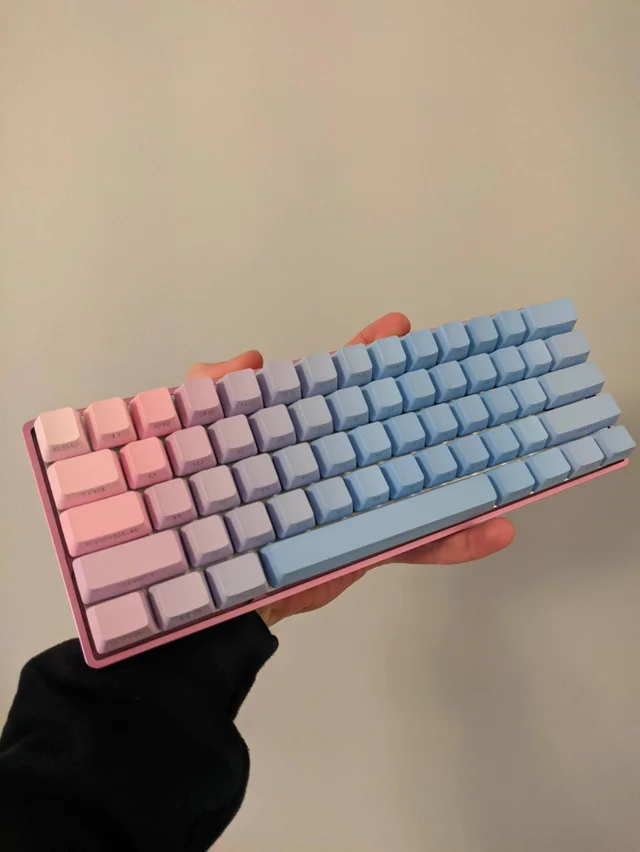
Custom build by flabbyresolute. Look at that gradient...
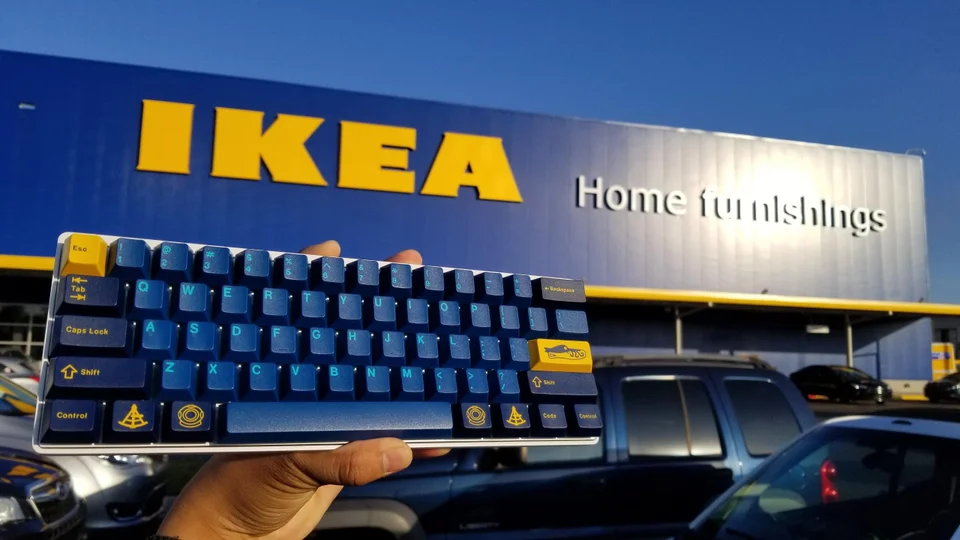
by inopoly. Funny but also it's actually really beautiful.
